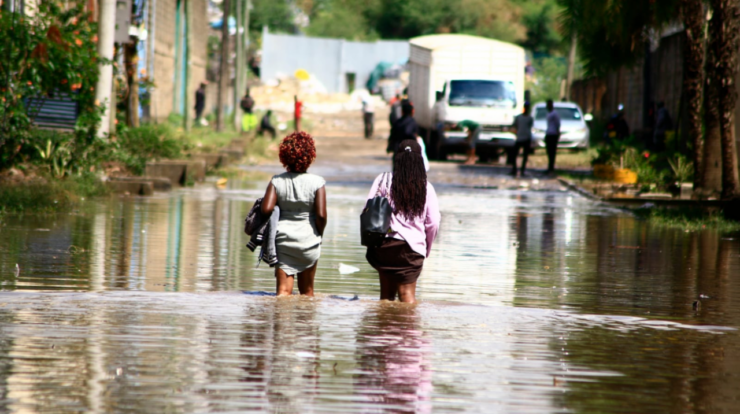
Kenya nairobi flooding – As Kenya’s capital, Nairobi, battles relentless flooding, the city’s infrastructure and communities face immense challenges. This analysis delves into the causes, impacts, and potential solutions to this pressing issue, shedding light on the urgent need for sustainable urban planning and community resilience.
Nairobi’s flooding crisis is a complex interplay of geographical factors, climate change, and inadequate infrastructure. The city’s topography, coupled with poor drainage systems and rapid urbanization, creates a perfect storm for flooding during heavy rainfall.
Kenya Nairobi Flooding

Nairobi, the capital city of Kenya, has been experiencing recurrent flooding, causing significant damage and displacement. This analysis examines the causes, impacts, mitigation efforts, and future projections related to flooding in Nairobi.
Causes of Flooding
Nairobi’s flooding is attributed to several factors, including:
- Geographical factors:Nairobi is situated in a low-lying area surrounded by hills, making it prone to waterlogging and flash floods.
- Inadequate drainage systems:The city’s drainage infrastructure is insufficient to handle heavy rainfall, leading to overflow and flooding.
- Rapid urbanization:The city’s rapid growth has led to increased impervious surfaces, reducing water absorption and exacerbating flooding.
- Climate change and extreme weather events:Increased rainfall intensity and frequency due to climate change contribute to more frequent and severe flooding.
- Poor waste management:Improper waste disposal blocks drainage systems and worsens flooding.
Impacts of Flooding
Flooding in Nairobi has severe consequences:
- Loss of life and property damage:Floods can cause drowning, electrocution, and property destruction.
- Displacement of residents:Flooding often forces residents to evacuate their homes, leading to temporary or permanent displacement.
- Health hazards:Contaminated floodwaters spread waterborne diseases and increase the risk of infections.
- Economic disruption:Flooding damages infrastructure, disrupts businesses, and affects livelihoods.
Mitigation and Response, Kenya nairobi flooding
Efforts to mitigate flooding in Nairobi include:
- Improved drainage systems:The government is investing in upgrading and expanding drainage infrastructure to enhance water flow.
- Urban planning:Land-use planning regulations aim to reduce impervious surfaces and promote water retention.
- Waste management initiatives:Campaigns encourage proper waste disposal and reduce blockages in drainage systems.
- Early warning systems:Systems are being implemented to provide timely alerts and evacuation warnings.
- Community engagement:Programs empower communities to participate in flood preparedness and response.
Closure
Addressing Nairobi’s flooding crisis requires a comprehensive approach that involves investing in resilient infrastructure, improving waste management, and empowering communities to play an active role in flood preparedness and response. By adopting innovative solutions and fostering collaboration, the city can mitigate the impacts of flooding and build a more sustainable future.
FAQs
What are the primary causes of flooding in Nairobi?
Nairobi’s flooding is primarily caused by a combination of geographical factors, such as its topography and poor drainage systems, exacerbated by rapid urbanization and the impacts of climate change.
How does flooding impact Nairobi’s residents and infrastructure?
Flooding in Nairobi leads to loss of life, property damage, displacement of residents, and disruption of essential services, severely affecting the city’s infrastructure and economy.
What measures are being taken to mitigate flooding in Nairobi?
The government and local authorities have implemented various measures to mitigate flooding, including improving drainage systems, constructing dams and reservoirs, and implementing flood warning systems.





